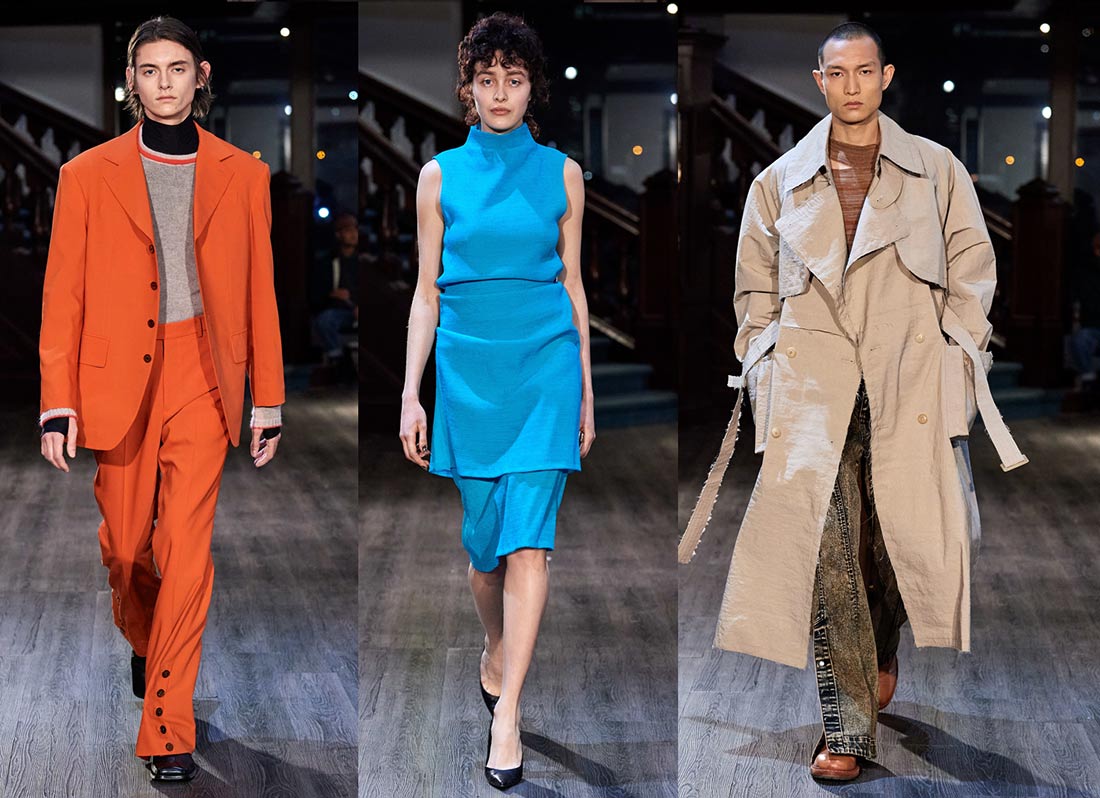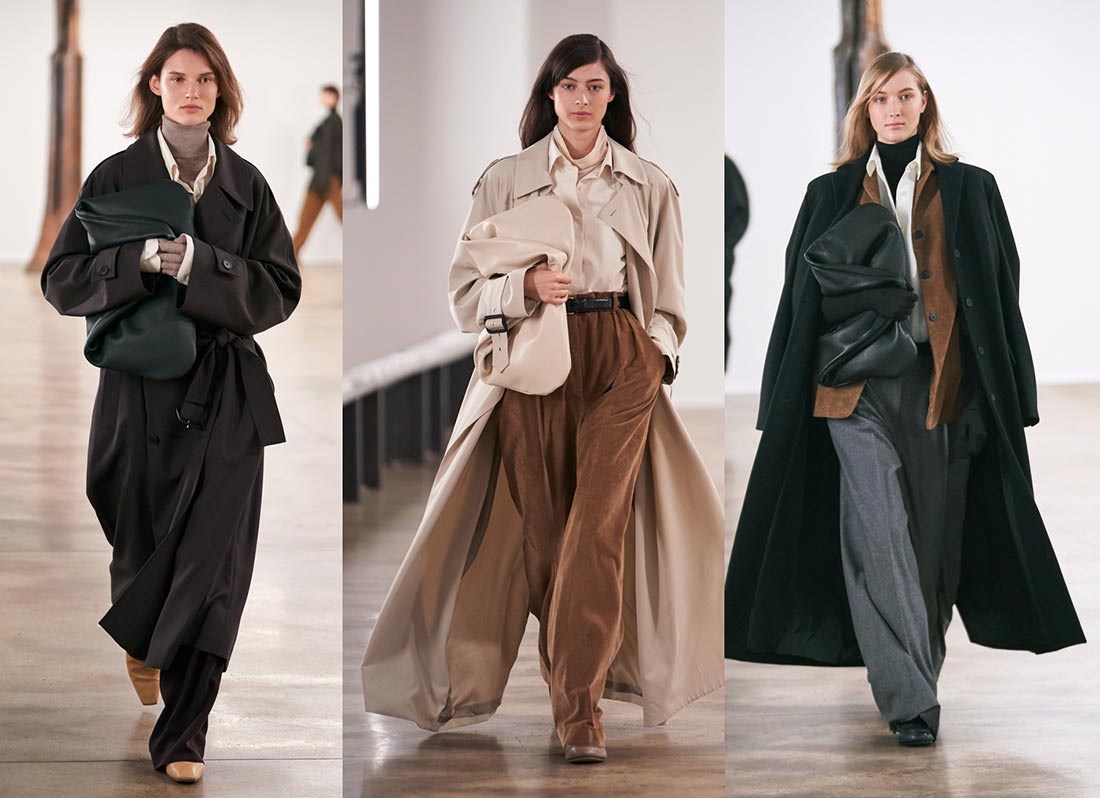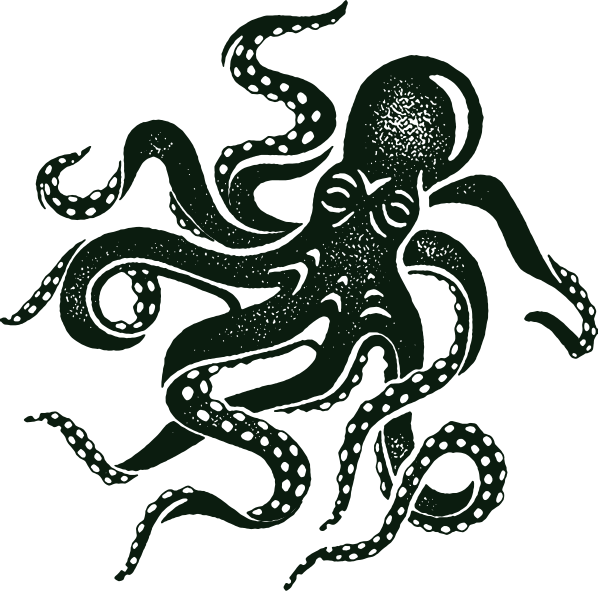The first ready to wear collections of the new decade are here, but this fashion week could have started off feeling like doomsday. Tom Ford fled NY in favor of Los Angeles, Barneys and Opening Ceremony officially shuttered their doors, and everyone went into fashion week with more awareness than ever that the industry they love is killing the planet. Some declared it the death of fashion week before it even began this year. The financially treacherous state of fashion has not helped the artistic stagnation of many NYFW designers. The industry was under a microscope this week, and everyone was looking for hopeful signs of life.
With some of NYFW’s heavy hitters (Tom Ford, Ralph Lauren) out of this week’s running, some of the less-established designers took on more of the spotlight. This boded well for talented smaller designers of the season, like Christopher John Rogers and Area. The creativity of these young designers made the dead weight of established brands who’ve gone stale feel all the more burdensome. Ill-conceived but no doubt well-funded, Rag & Bone showed a jarring 50 look collection that seemed about ten years behind the times. Proenza Schouler‘s fall 2020 collection seemed to pander a little too desperately to the kind of women who are just going to buy Bottega instead.
There were some collections that felt woefully out of touch with the times. A word on ladylike dressing: some designers need to read the room. When I try to imagine the life of the woman who would wear FW 2020 Adam Lippes collection, I feel claustrophobic. The limp ruffles and suffocating blouses wouldn’t look modern in a retirement home. Brock Collection also showed a collection with some strangely punishing ideas about female sexuality. Distressingly thin models with their faces choked under knotted black veils walked the runway in Victorian style shirts; their waists all bound in belts or sashes. It was quite a choice to make during a week where you can’t go two hours without hearing about the Weinstein trial.
We are allegedly striving to create a world less encumbered by traditional gender roles. This should be a time where some fresh ideas about dressing ourselves emerge. I find myself looking at menswear a lot more often now. Once you void the need for a closet full of fashion-y fashion, then you can actually start having some really interesting conversations about clothes. I was most interested in the shows that seemed less about fashion and more about getting dressed.

I became particularly interested in Eckhaus Latta this week, especially the menswear they showed. I have heard some fashion people talk about Eckhaus Latta with sneerish know-it-allism towards its ubiquity among creative types. Whatever. I am from Dallas so I don’t see people in Eckhaus Latta. I don’t think that these are special clothes meant to be worn by special people. I have found Eckhaus Latta to be a very democratic label in that it drops a lot of preconceived notions about what fashion is. The clothes piece by piece are all very wearable and they tend to invite you in with a question. A question like, what’s so dangerous about a man in acid wash button flap jeans? Eckhaus Latta has a knack for making acid wash flap jeans seem so natural that after bearing witness to them, they are already practically coded into your reality. Suddenly you find no resistance to the jeans. This is a unique strength for a brand.
At the intersection of ugly and beautiful, comfort and discomfort, is often where the most interesting creative growth happens. I don’t think it always has to be a bang-bang type of clash for a good idea to emerge. You can start small, like with bootcut acid wash jeans. Rei Kawakubo turns reality inside out or forgoes reality all together. The most exciting ideas are usually the ones that make us a little uncomfortable at first brush. A fashion spectator hopes for a few collections every season that will provoke them to examine their own tightly held ideas about art and life. We like fashion to make us a little uncomfortable, and I think we could do with a few more of these provocations at New York fashion week.
Not all creative growth is born out of conflict though. Sometimes it looks more like a practice made perfect. The Row showed one of the best collections of 2020 with stunning suiting and handsome coats. No frills, no gimmicks, with laid back styling. There was a tranquility and certitude of craftsmanship that called to mind Margiela’s years at Hermes. It was masterful. The clothes seemed to come from out of time. It’s the kind of collection that people will be still referencing from 20 years from now. Big congratulations to the Olsens on this fine collection.

Gabriela Hearst also showed a focused collection, concerned more with customers and craftsmanship than with capital-F fashion. Tan corduroy suits flowed into breathtaking suede fringe into hand-painted leather, with many iterations of her delightful knits. Her talent lies in her obsession and resourcefulness for sustainable practices. Her fabulous scarves and shawls are made with recycled cashmere yarn by an artisan collective Hearst developed in her native Uruguay, where she lives part time on a ranch. “When it comes to energy, we need to look into the future, and when it comes to garments, into the past.” she said backstage. I love that.
Marc Jacobs seemed to echo this sentiment at his outstanding FW 2020 show. Marc Jacobs’ work continues to carry on the legacy of great American fashion design. Marc’s recent work pays subtle homage to the heritage of Bonnie Cashin, Geoffrey Beene, Halston, and Bill Blass. He pulls steadily and inventively from the DNA of fashion. This collection had the flavor of the best of 90s Prada as well as Marc’s own 90’s archive. He is smart to play on what young women today are wishing they could have experienced before they were born. Show Belle du Jour to a fashion-conscious teenage girl today and she’ll be scrambling to find her own perfect mod shift dress (and probably to little avail, mod collectors have really cleaned out the best ones). For that girl’s sake, I hope this collection has a trickle down effect. Marc’s instincts are dead on. This was a collection with just the right kind and right amount of design when we’ve all become exhausted by the fashion machine.




I feel so meh about everything related to Fashion Month ever since Phoebe Philio left Celine. Too many shows, not enough craft, tired ideas recycled in an endless loop. The Marc show was lovely, but at this point, I’ve become bored with his regurgitation of fashion past.
Really, the current state of affairs will just have fashion lovers buying up even more 90’s Margiela, Jil Sander, Helmut Lang, and Prada, as well CDG, Yohji, and Issey, because that’s who a lot of designers are referencing/cribbing anyway. Why buy imitators when you can go straight to the source?
Cathy Horyn wrote about her exhaustion with fashion a few years ago and I’ve often returned to her piece whenever I get sick of what I’m seeing:
https://www.nytimes.com/2014/02/06/t-magazine/slave-no-more.html
“Of course, in the 1990s, Helmut Lang and Jil Sander led a revolution with plain tailoring, neutral colors and natural hair and makeup. Lang’s style, in particular, proved popular with editors and buyers, many of whom had witnessed the sex gags of Jean Paul Gaultier and Thierry Mugler in the ’80s, and were sickened or just bored by them. More than a decade earlier, Halston, Stephen Burrows and Calvin Klein had created a template of modern informality, with clean sportswear and lightly constructed dresses for a generation that wanted to go braless. Indeed, these styles reflected not only broad social change, but also the loosening of designers’ grip on women’s bodies. Yet, by the early ’90s, with the exception of Marc Jacobs’s grunge collection for Perry Ellis, along with Zoran and Joan Vass, New York was largely obsessed with the retro trappings of nouvelle society glamour, down to fur-trimmed pencil skirts and gloves. No wonder women sought the anonymity of Lang and Sander.”
So many talented designers cite burnout when they leave the big houses due to the relentless demand for creativity. I can’t help feeling everyone – consumers, the environment and the designers themselves – would benefit from fewer new collections and more secondhand and vintage shopping.
I suppose the only loser in that world would be the companies themselves…in other words, it’ll probably never happen. Womp womp.
Honestly, NYFW has not been quite what it should be for years now (Tom Ford was right to trim it), and while I’m glad to see Marc Jacobs making something of a resurgence in recent years after a long time in creative doldrums, even his collection still feels like 00s Miuccia during the time when she had those 60s influences.
But on a larger scale, so much about fashion and fashion reporting has felt so dour and joyless for so long – no minis or cleavage, cover up your legs and dress ‘modest’, you hussies (even as Reformation and Realisationpar do a roaring business in backless/short/low-cut dresses). Every piece of clothing you buy is killing the planet! Throw out everything except for the ‘perfect’ minimalist palette of neutrals! – that sometimes it’s refreshing to be faced with collections that aren’t about those things.
It’s depressing, sure, but also necessary. For a long time, fashion skirted responsibility as to environmental sustainability, showcasing scarily thin models, sexual abuse and harassment, lack of diversity, and a whole of other issues. The reportage is dour because the industry is starting to wake up and understand the depth of its problems. I don’t think it’s bad for fashion to finally question whether its practices are necessary and for us to have so many clothes we don’t wear.
I still see plenty of images of young size 0 models/movie stars/influencers wearing next to nothing. As a woman in her late 30s, I’m glad there’s been increased visibility for older women but I’d hardly say it’s anything close to what younger women get. The reason why women like me are rejoicing at Phoebe Philo’s possible return is that she understands how we want to dress—with the freedom and ease and coolness of men, but with a fun, colorful, and feminine energy. Plus, Joan Didion in a campaign! I did the stilettos and miniskirts thing in my 20s and earl 30s, and I still do on occasion, but a men’s shirt and, trousers, and sneakers feel way more liberating to me these days.
Yes! I loved Marc and The Row too. Best shows of the season. I was also really taken with The Row’s gigantic, slouchy clutch bags and Marc’s little kitten heels. Everything was so excellent from these two collections.
Your writing just gets better and better, Jane! This is a great, very canny and incisive piece
Love your insight, Jane, I truly respect your knowledge of the history of fashion, this is so refreshing, you actually have something to say about the clothes unlike all those 23-year-old girls trying hard to be fashion influencers yet ending up being walking ads for any brand willing to work with them…Please, keep writing about fashion in general and your personal style as well, I will be your no.1 reader and fan!
Excellent! Thank you!!!
I truly respect your knowledge about history of fashion. This is great!
Review Belt For Man
Thank you for this thoughtful write-up. I really enjoyed reading it.
love your fashion posts! gives me insight to the missing piece of fashion ive been craving.
Just to say : very well written!
Great review – reasoned and accurate. Very few designers excite me lately; – which is why blogs/Instagram’s etc like yours are essential viewing – a fresh take on vintage and curated buys.
The Row is a perennial favourite of mine. The Olsen’s clothing remind me of the best of Meg Ryan and Diane Keaton style. I love Megs clothes in the movie Hanging Up.
:)
So glad I’m clearly not the only one who is tired of “fashion” in the last few years. 2008 was one of my favorite fashion years (Prada’s Spring collection from that year is one of my all time favs!). But now it feels very forced, very trend based, and paced way too fast. Environmental concerns are a given – but I also feel the frantic need to keep up with what’s “in” more than ever. The fashion industry seems a bit like a runaway train, but hopefully it will slow down one day.
Solid analysis here, Jane. I found myself nodding along as I read in agreement. I wonder, too, what kind of head space the male designers have had when designing their women’s collections…. How does this era of gender fluidity today influence the male lead houses and why does it seem that the binary of the lady like fashions vs. menswear don’t mimic the more androgynous reality of the times? It seems like they end up picking one or the other…